Side effects of having a gallbladder removed. Gallbladder Removal Surgery: Understanding Side Effects and Complications
What are the potential side effects of gallbladder removal surgery. How can patients manage complications after the procedure. What dietary changes are recommended following gallbladder removal. When should patients seek medical attention after surgery.
The Gallbladder’s Function and Reasons for Removal
The gallbladder is a small, pouch-like organ located on the right side of the abdomen. Its primary function is to store and release bile, a substance produced by the liver that aids in fat digestion. However, certain conditions may necessitate its removal, a procedure known as cholecystectomy.
Common reasons for gallbladder removal include:
- Gallstones
- Acute or chronic inflammation caused by gallstones
- Bile duct stones
These conditions often result from an excess of cholesterol or bilirubin in the bile. When symptoms become severe or interfere with a person’s health, doctors may recommend either open or laparoscopic gallbladder removal surgery.

Common Side Effects of Gallbladder Removal
While it’s possible to live a healthy life without a gallbladder, some patients may experience side effects following the surgery. These can range from minor digestive issues to more serious complications.
Difficulty Digesting Fat
After gallbladder removal, the body needs time to adjust to its new method of fat digestion. Without the gallbladder to store and concentrate bile, the liver releases bile directly into the intestines. This can lead to temporary digestive issues, particularly when consuming fatty foods.
Diarrhea and Flatulence
Indigestion following gallbladder removal can manifest as diarrhea or increased flatulence. These symptoms may be exacerbated by a diet high in fat or low in fiber. In some cases, bile leakage can result in insufficient bile in the intestines, leading to loose stools.
Constipation
While gallbladder removal often reduces constipation in patients who previously suffered from gallbladder disease, the surgery itself and the anesthesia used during the procedure can lead to short-term constipation. Dehydration can further aggravate this condition.

Potential Complications of Gallbladder Surgery
As with any surgical procedure, gallbladder removal carries some risks of complications. While these are relatively rare, it’s important for patients to be aware of potential issues that may arise.
Intestinal Injury
During the surgery, there’s a small risk that the surgeon might accidentally damage the intestines. This rare complication can result in abdominal cramping and requires immediate medical attention.
Bile Leakage
In some cases, bile may leak into other organs following gallbladder removal. This can lead to various symptoms and may require additional treatment.
Retained Gallstones
Occasionally, gallstones may be left behind in the bile ducts after surgery. These can cause severe pain or lead to jaundice, a condition characterized by yellowing of the skin and eyes.
Recovery Process and Dietary Recommendations
The recovery process following gallbladder removal varies depending on the type of surgery performed. Open surgery typically requires a hospital stay of 3-5 days, while laparoscopic surgery often allows patients to return home the same day.

Regardless of the surgical method, patients are advised to avoid physical strain for at least two weeks post-surgery. Proper wound care and monitoring for signs of infection are crucial during the recovery period.
Dietary Guidelines After Gallbladder Removal
Following gallbladder removal, doctors often recommend a gradual return to a normal diet. Initial dietary recommendations may include:
- A liquid or bland diet for the first few days
- Gradual reintroduction of usual foods
- Increased water intake throughout the day
- Consumption of simple fruits and vegetables
- Limiting highly salty, sweet, spicy, or fatty foods
While fiber is essential for good digestion, patients are often advised to limit their initial intake of certain high-fiber foods such as nuts, seeds, whole grains, and certain vegetables like brussels sprouts, broccoli, cauliflower, and cabbage.
Managing Long-Term Effects of Gallbladder Removal
For most patients, the side effects of gallbladder removal are temporary and resolve as the body adjusts to the absence of the gallbladder. However, some individuals may experience longer-term effects that require ongoing management.

Dietary Modifications
Some patients may need to make permanent changes to their diet to manage persistent digestive issues. This might include:
- Reducing fat intake
- Eating smaller, more frequent meals
- Increasing fiber intake gradually
- Avoiding trigger foods that cause discomfort
Bile Acid Sequestrants
In cases where diarrhea persists, doctors may prescribe bile acid sequestrants. These medications can help reduce diarrhea by binding to bile acids in the intestines.
Regular Follow-ups
Patients who have undergone gallbladder removal should maintain regular check-ups with their healthcare provider to monitor for any long-term complications and ensure optimal digestive health.
When to Seek Medical Attention After Gallbladder Removal
While some discomfort is normal following gallbladder removal, certain symptoms may indicate complications that require immediate medical attention. Patients should contact their doctor if they experience:
- Pain that doesn’t improve with time, new abdominal pain, or worsening pain
- Intense nausea or vomiting
- Yellowing of the skin or whites of the eyes (jaundice)
- No bowel movement or passing of gas for more than three days
- Signs of infection at the incision site, such as redness, swelling, or discharge
- Persistent fever
Prompt medical attention in these cases can prevent more serious complications and ensure a smooth recovery process.
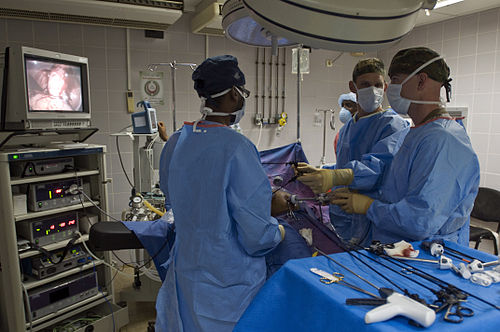
Living Without a Gallbladder: Long-Term Outlook
The gallbladder, while useful, is not essential for survival or good health. Many people live full, healthy lives without a gallbladder. The liver continues to produce bile, which flows directly into the small intestine to aid in fat digestion.
Most patients who undergo gallbladder removal experience significant relief from the symptoms that led to the surgery, such as abdominal pain, nausea, and indigestion associated with gallstones or gallbladder inflammation.
Potential Long-Term Benefits
Gallbladder removal can offer several long-term benefits, including:
- Relief from chronic pain and discomfort
- Reduced risk of gallbladder cancer
- Prevention of potentially life-threatening complications of gallbladder disease
- Improved quality of life
Ongoing Digestive Health
While the body adapts well to the absence of a gallbladder, maintaining good digestive health remains important. This includes:
- Eating a balanced, nutritious diet
- Staying hydrated
- Exercising regularly
- Managing stress
- Avoiding excessive alcohol consumption
By adopting these healthy habits, individuals who have undergone gallbladder removal can support their overall digestive function and minimize any potential long-term effects of the surgery.

Advances in Gallbladder Removal Surgery
Gallbladder removal surgery has evolved significantly over the years, with advancements in surgical techniques leading to improved outcomes and faster recovery times for patients.
Laparoscopic Cholecystectomy
Laparoscopic cholecystectomy, also known as keyhole surgery, has become the gold standard for gallbladder removal. This minimally invasive procedure offers several advantages over traditional open surgery:
- Smaller incisions
- Reduced pain
- Shorter hospital stays
- Faster recovery times
- Lower risk of complications
Robotic-Assisted Surgery
In recent years, robotic-assisted gallbladder removal has emerged as an advanced surgical option. This technique combines the benefits of laparoscopic surgery with enhanced precision and control for the surgeon. Potential advantages include:
- Improved visualization of the surgical site
- Greater dexterity for complex procedures
- Potentially reduced risk of bile duct injury
While robotic-assisted surgery is not necessary for all gallbladder removals, it may be beneficial in certain complex cases or for patients with specific anatomical considerations.
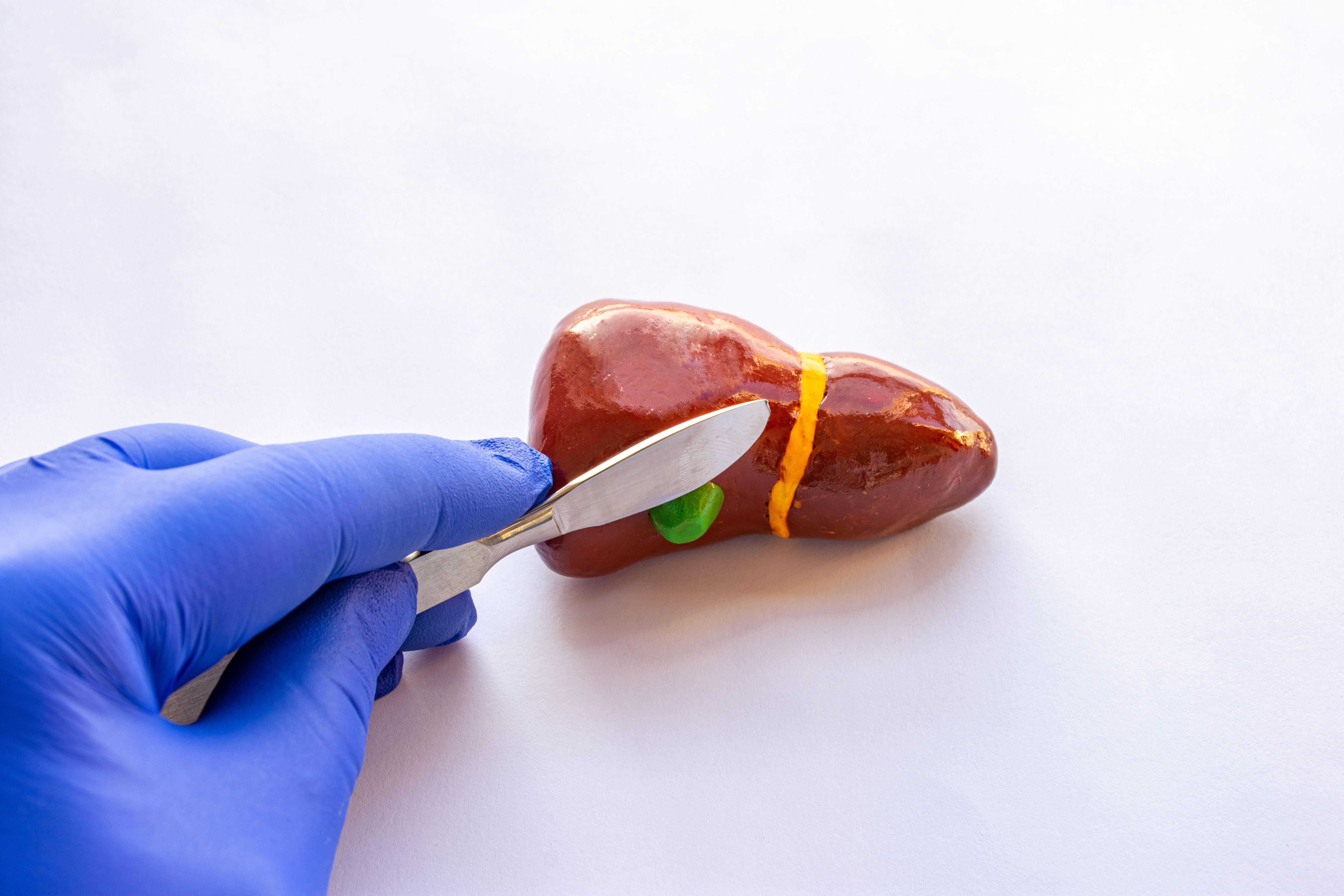
Single-Incision Laparoscopic Surgery
Single-incision laparoscopic surgery (SILS) is another advancement in gallbladder removal techniques. This approach involves making a single small incision, typically through the navel, rather than the multiple incisions used in traditional laparoscopic surgery. Potential benefits of SILS include:
- Improved cosmetic results
- Potentially less postoperative pain
- Faster recovery in some cases
However, SILS may not be suitable for all patients and requires specialized training and equipment.
Prevention of Gallbladder Problems
While not all gallbladder problems can be prevented, certain lifestyle choices and habits can reduce the risk of developing gallstones and other gallbladder issues. Understanding these preventive measures can be valuable, even for those who have already undergone gallbladder removal.
Dietary Factors
A healthy diet plays a crucial role in preventing gallbladder problems. Consider the following dietary recommendations:
- Maintain a healthy weight: Obesity increases the risk of gallstones
- Eat a balanced diet rich in fruits, vegetables, and whole grains
- Limit saturated fats and cholesterol
- Increase fiber intake
- Stay hydrated by drinking plenty of water
Lifestyle Choices
In addition to diet, other lifestyle factors can influence gallbladder health:

- Exercise regularly: Physical activity can help prevent gallstones
- Avoid rapid weight loss: Crash diets can increase the risk of gallstone formation
- Limit alcohol consumption
- Quit smoking: Smoking is associated with an increased risk of gallbladder problems
Regular Health Check-ups
Regular medical check-ups can help detect gallbladder issues early, potentially preventing the need for surgery. Discuss any family history of gallbladder problems with your healthcare provider, as genetic factors can increase your risk.
By implementing these preventive measures, individuals can promote overall digestive health and potentially reduce their risk of developing gallbladder issues in the future.
Gallbladder Removal Surgery: Side Effects and Complications
We include products we think are useful for our readers. If you buy through links on this page, we may earn a small commission Here’s our process.
Healthline only shows you brands and products that we stand behind.
Our team thoroughly researches and evaluates the recommendations we make on our site. To establish that the product manufacturers addressed safety and efficacy standards, we:
- Evaluate ingredients and composition: Do they have the potential to cause harm?
- Fact-check all health claims: Do they align with the current body of scientific evidence?
- Assess the brand: Does it operate with integrity and adhere to industry best practices?
We do the research so you can find trusted products for your health and wellness.
Read more about our vetting process.
Was this helpful?
Some people may experience side effects from gallbladder removal, ranging from diarrhea and difficulty digesting fat to intestinal injury and infection.
The gallbladder is a small pouch-like organ on the right side of your abdomen. Its job is to store and release bile, a substance made by the liver to help you digest fats.
The most frequent forms of gallbladder disease arise from having too much cholesterol or bilirubin, a liver pigment, in your bile. This leads to:
- gallstones
- acute or chronic inflammation caused by gallstones
- bile duct stones
If symptoms become too uncomfortable or interfere with your health, doctors may suggest either open or laparoscopic gallbladder removal.
Fortunately, you can live a healthy life without your gallbladder, and the surgery to remove it is relatively simple. Without a gallbladder, bile can move directly from your liver to your intestines to aid in digestion. However, there’s still some chance that you might experience side effects after gallbladder removal.
Any surgery has potential complications, including incision bleeding, movement of surgical materials to other parts of the body, pain, or infection — with or without a fever. It’s possible you’ll experience digestive side effects when your gallbladder is removed.
It’s possible you’ll experience digestive side effects when your gallbladder is removed.
Difficulty digesting fat
It may take your body time to adjust to its new method of digesting fat. The medications you were given during surgery may also cause indigestion. This doesn’t typically last long, but some patients do develop longer-term side effects, usually caused by bile leaking into other organs or gallstones that were left behind in the bile ducts.
Diarrhea and flatulence
Indigestion can cause diarrhea or flatulence, often made worse by excess fat or too little fiber in the diet. Bile leakage can mean having an insufficient amount of bile in the intestines to digest fat, which loosens stool.
Constipation
Although removal of a diseased gallbladder usually reduces constipation, surgery and anesthesia used during the procedure can lead to short-term constipation. Dehydration can make the constipation worse.
Intestinal injury
During gallbladder removal, it’s rare but possible for a surgeon to damage the intestines.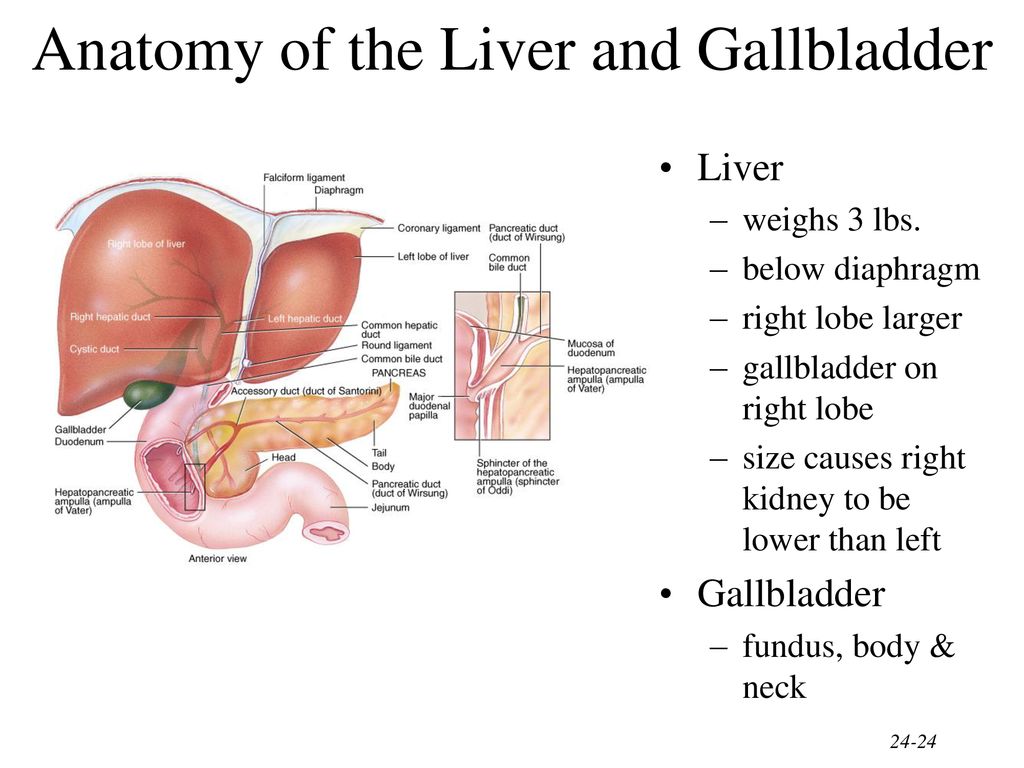 This may result in cramping. Some pain is normal following any surgery, but if it continues beyond a few days or gets worse instead of better, speak to your doctor.
This may result in cramping. Some pain is normal following any surgery, but if it continues beyond a few days or gets worse instead of better, speak to your doctor.
Jaundice or fever
A stone that remains in a bile duct after gallbladder removal surgery can cause severe pain, or jaundice, which is the yellowing of the skin. A complete blockage can cause an infection.
If there are no complications, your recovery from gallbladder surgery should go smoothly.
To increase the chances of success, your doctor may suggest that you remain in the hospital for three to five days if you have open surgery. If you have keyhole, or laparoscopic, surgery, you may be able to go home the same day.
Either way, try not to physically strain yourself for at least two weeks.
Your medical team will teach you how to clean your wounds and watch for infection. Don’t shower until you get the green light from your doctor.
Your doctor may prescribe a liquid or bland diet for the first few days. After that, they’ll probably suggest adding back your usual foods, little by little. Drink water throughout the day. It’s also a good idea to eat simple fruits and vegetables while limiting highly salty, sweet, spicy, or fatty foods.
After that, they’ll probably suggest adding back your usual foods, little by little. Drink water throughout the day. It’s also a good idea to eat simple fruits and vegetables while limiting highly salty, sweet, spicy, or fatty foods.
Fiber is essential for good digestion after surgery, but limit your initial intake of the following:
- nuts
- seeds
- whole grains
- brussels sprouts
- broccoli
- cauliflower
- cabbage
- high-fiber cereals
Although it’s normal to have some side effects after surgery, if you notice any of the following, contact a doctor right away:
- pain that doesn’t get better with time, new abdominal pain, or pain that gets worse
- intense nausea or vomiting
- yellowing of your skin or the whites of your eyes
- no bowel movement or passing of gas for more than three days after surgery
- diarrhea that continues for three or more days following surgery
Gallbladder removal is a last resort. If your doctor doesn’t feel that surgery is urgent, you may want to try lifestyle changes first.
If your doctor doesn’t feel that surgery is urgent, you may want to try lifestyle changes first.
Diet and exercise
Reaching and maintaining a healthy weight can reduce pain and complications from gallbladder disease by reducing the cholesterol and inflammation that can cause gallstones.
A diet lower in fat and higher in fiber, and full of fruits and vegetables, can also improve gallbladder health. Swap animal fats, fried foods, and oily packaged snacks for olive oil and other healthy fats. Limit or avoid sugar.
Regular exercise can help your body reduce cholesterol and prevent gallstones from forming. Magnesium deficiency can increase your risk of developing gallstones. Eat magnesium-rich foods, including dark chocolate, spinach, nuts, seeds, and beans to improve gallbladder health.
Gallbladder cleanse
A gallbladder cleanse usually refers to avoiding food for up to 12 hours, then drinking a liquid recipe like the following: 4 tablespoons of olive oil with 1 tablespoon of lemon juice every 15 minutes for two hours.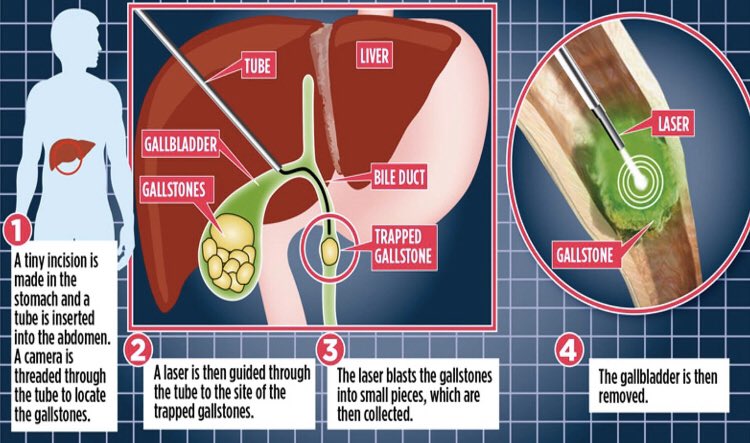
Tonics
Apple cider vinegar and turmeric both have been shown to reduce inflammation. If you mix them with warm water you can enjoy them as a tea-like drink and may experience relief of your gallbladder symptoms. Some people find the menthol in peppermint tea to be soothing as well.
Some studies have shown the benefits of turmeric on gallstone formation. However, if you have gallstones, be careful how much turmeric you ingest. One 2002 study with 12 healthy participants showed 50 percent contraction of the gallbladder due to curcumin. This increased contraction could cause pain.
Supplements
In addition to magnesium, choline plays a role in gallbladder health.
According to the Harvard Health Letter, bile salts may be worth a try as well, especially if your liver has been producing thick bile. Bile acids also come in prescription strength.
Speak to a doctor or nutritionist about taking one or more of these supplements if you have gallstones or a blocked bile duct.
Acupuncture
Acupuncture may be of potential benefit to those with gallbladder disease. It most likely works by increasing the flow of bile while also reducing spasms and pain.
It’s important to note that although diet and exercise are proven methods of reducing gallbladder complications, other methods like cleanses, tonics, and supplements haven’t been studied extensively, and side effects may occur. Be sure to discuss these options with your healthcare provider before proceeding.
Gallbladder removal is a fairly common procedure, but it’s always possible that you may experience some side effects. Knowing how to identify and reduce symptoms, side effects, and complications before and after surgery may make for an easier experience.
Gallbladder Removal Surgery: Side Effects and Complications
We include products we think are useful for our readers. If you buy through links on this page, we may earn a small commission Here’s our process.
Healthline only shows you brands and products that we stand behind.
Our team thoroughly researches and evaluates the recommendations we make on our site. To establish that the product manufacturers addressed safety and efficacy standards, we:
- Evaluate ingredients and composition: Do they have the potential to cause harm?
- Fact-check all health claims: Do they align with the current body of scientific evidence?
- Assess the brand: Does it operate with integrity and adhere to industry best practices?
We do the research so you can find trusted products for your health and wellness.
Read more about our vetting process.
Was this helpful?
Some people may experience side effects from gallbladder removal, ranging from diarrhea and difficulty digesting fat to intestinal injury and infection.
The gallbladder is a small pouch-like organ on the right side of your abdomen. Its job is to store and release bile, a substance made by the liver to help you digest fats.
The most frequent forms of gallbladder disease arise from having too much cholesterol or bilirubin, a liver pigment, in your bile.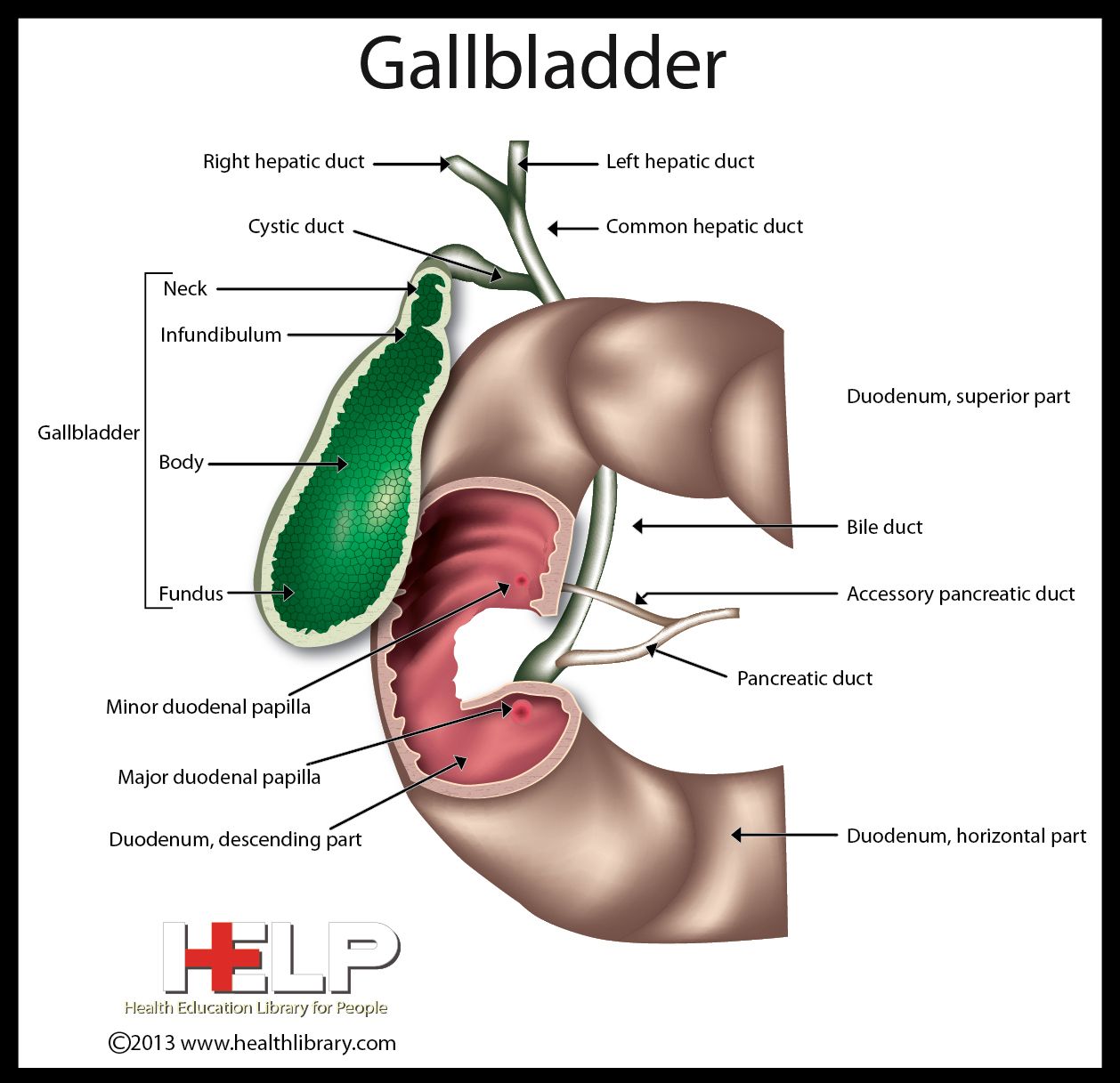 This leads to:
This leads to:
- gallstones
- acute or chronic inflammation caused by gallstones
- bile duct stones
If symptoms become too uncomfortable or interfere with your health, doctors may suggest either open or laparoscopic gallbladder removal.
Fortunately, you can live a healthy life without your gallbladder, and the surgery to remove it is relatively simple. Without a gallbladder, bile can move directly from your liver to your intestines to aid in digestion. However, there’s still some chance that you might experience side effects after gallbladder removal.
Any surgery has potential complications, including incision bleeding, movement of surgical materials to other parts of the body, pain, or infection — with or without a fever. It’s possible you’ll experience digestive side effects when your gallbladder is removed.
Difficulty digesting fat
It may take your body time to adjust to its new method of digesting fat. The medications you were given during surgery may also cause indigestion.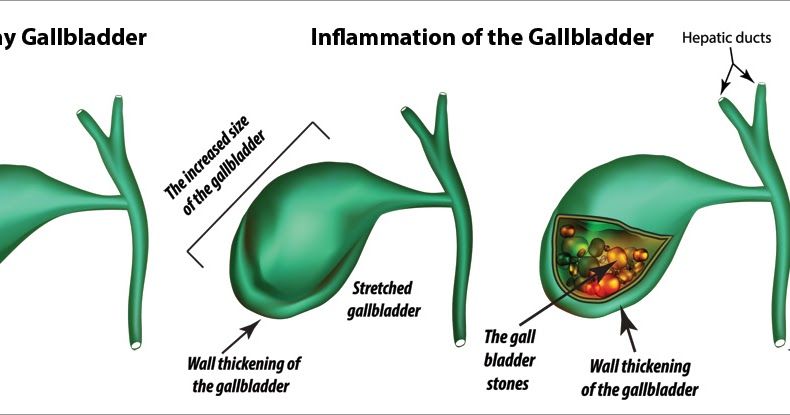 This doesn’t typically last long, but some patients do develop longer-term side effects, usually caused by bile leaking into other organs or gallstones that were left behind in the bile ducts.
This doesn’t typically last long, but some patients do develop longer-term side effects, usually caused by bile leaking into other organs or gallstones that were left behind in the bile ducts.
Diarrhea and flatulence
Indigestion can cause diarrhea or flatulence, often made worse by excess fat or too little fiber in the diet. Bile leakage can mean having an insufficient amount of bile in the intestines to digest fat, which loosens stool.
Constipation
Although removal of a diseased gallbladder usually reduces constipation, surgery and anesthesia used during the procedure can lead to short-term constipation. Dehydration can make the constipation worse.
Intestinal injury
During gallbladder removal, it’s rare but possible for a surgeon to damage the intestines. This may result in cramping. Some pain is normal following any surgery, but if it continues beyond a few days or gets worse instead of better, speak to your doctor.
Jaundice or fever
A stone that remains in a bile duct after gallbladder removal surgery can cause severe pain, or jaundice, which is the yellowing of the skin. A complete blockage can cause an infection.
A complete blockage can cause an infection.
If there are no complications, your recovery from gallbladder surgery should go smoothly.
To increase the chances of success, your doctor may suggest that you remain in the hospital for three to five days if you have open surgery. If you have keyhole, or laparoscopic, surgery, you may be able to go home the same day.
Either way, try not to physically strain yourself for at least two weeks.
Your medical team will teach you how to clean your wounds and watch for infection. Don’t shower until you get the green light from your doctor.
Your doctor may prescribe a liquid or bland diet for the first few days. After that, they’ll probably suggest adding back your usual foods, little by little. Drink water throughout the day. It’s also a good idea to eat simple fruits and vegetables while limiting highly salty, sweet, spicy, or fatty foods.
Fiber is essential for good digestion after surgery, but limit your initial intake of the following:
- nuts
- seeds
- whole grains
- brussels sprouts
- broccoli
- cauliflower
- cabbage
- high-fiber cereals
Although it’s normal to have some side effects after surgery, if you notice any of the following, contact a doctor right away:
- pain that doesn’t get better with time, new abdominal pain, or pain that gets worse
- intense nausea or vomiting
- yellowing of your skin or the whites of your eyes
- no bowel movement or passing of gas for more than three days after surgery
- diarrhea that continues for three or more days following surgery
Gallbladder removal is a last resort. If your doctor doesn’t feel that surgery is urgent, you may want to try lifestyle changes first.
If your doctor doesn’t feel that surgery is urgent, you may want to try lifestyle changes first.
Diet and exercise
Reaching and maintaining a healthy weight can reduce pain and complications from gallbladder disease by reducing the cholesterol and inflammation that can cause gallstones.
A diet lower in fat and higher in fiber, and full of fruits and vegetables, can also improve gallbladder health. Swap animal fats, fried foods, and oily packaged snacks for olive oil and other healthy fats. Limit or avoid sugar.
Regular exercise can help your body reduce cholesterol and prevent gallstones from forming. Magnesium deficiency can increase your risk of developing gallstones. Eat magnesium-rich foods, including dark chocolate, spinach, nuts, seeds, and beans to improve gallbladder health.
Gallbladder cleanse
A gallbladder cleanse usually refers to avoiding food for up to 12 hours, then drinking a liquid recipe like the following: 4 tablespoons of olive oil with 1 tablespoon of lemon juice every 15 minutes for two hours.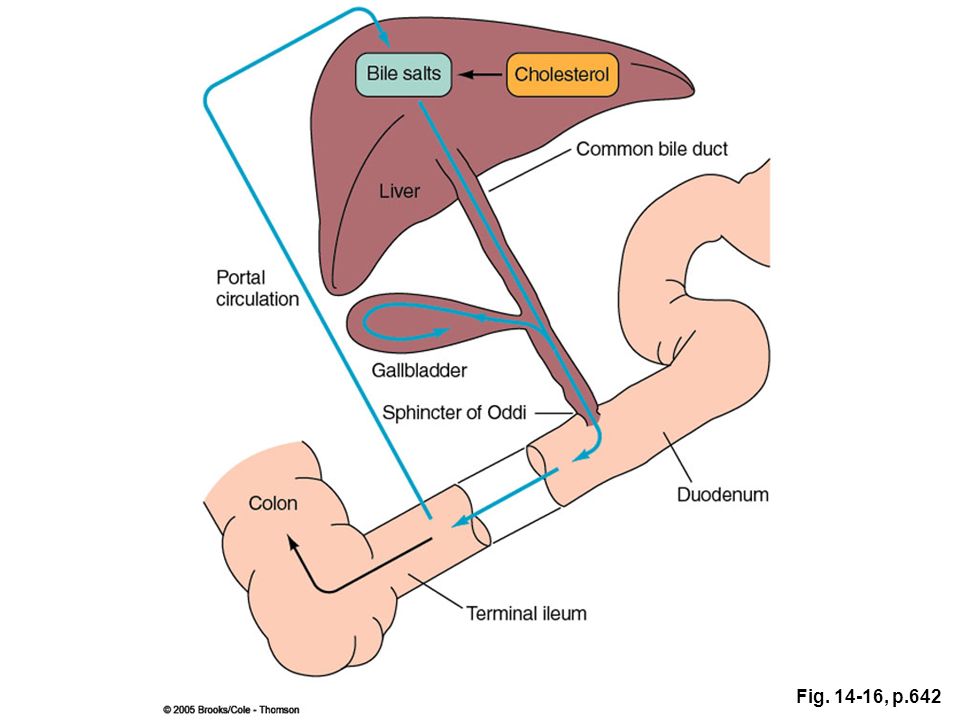
Tonics
Apple cider vinegar and turmeric both have been shown to reduce inflammation. If you mix them with warm water you can enjoy them as a tea-like drink and may experience relief of your gallbladder symptoms. Some people find the menthol in peppermint tea to be soothing as well.
Some studies have shown the benefits of turmeric on gallstone formation. However, if you have gallstones, be careful how much turmeric you ingest. One 2002 study with 12 healthy participants showed 50 percent contraction of the gallbladder due to curcumin. This increased contraction could cause pain.
Supplements
In addition to magnesium, choline plays a role in gallbladder health.
According to the Harvard Health Letter, bile salts may be worth a try as well, especially if your liver has been producing thick bile. Bile acids also come in prescription strength.
Speak to a doctor or nutritionist about taking one or more of these supplements if you have gallstones or a blocked bile duct.
Acupuncture
Acupuncture may be of potential benefit to those with gallbladder disease. It most likely works by increasing the flow of bile while also reducing spasms and pain.
It’s important to note that although diet and exercise are proven methods of reducing gallbladder complications, other methods like cleanses, tonics, and supplements haven’t been studied extensively, and side effects may occur. Be sure to discuss these options with your healthcare provider before proceeding.
Gallbladder removal is a fairly common procedure, but it’s always possible that you may experience some side effects. Knowing how to identify and reduce symptoms, side effects, and complications before and after surgery may make for an easier experience.
Complications after removal of the gallbladder
That is why we at GMS Hospital strictly adhere to international protocols and do not remove the gallbladder in case of asymptomatic cholelithiasis (and this is 80% of patients), when the risk of complications of the disease itself and the risk of negative consequences of the operation is the same, and is about 2%.
You can read more about gallstone disease, risk factors and our approach to its treatment here.
Yes, GMS Hospital has excellent modern equipment and experienced surgeons who strictly adhere to the principles of “safe cholecystectomy”, and the number of complications in our clinic is an order of magnitude lower than the above data from international studies. But, nevertheless, we always remember the possible negative consequences of gallbladder removal, and we recommend surgery only in case of symptomatic or complicated course of gallstone disease: in this case, the risk of acute cholecystitis, pancreatitis, cholangitis, etc. increases by about 10 times, and is an order of magnitude higher than the likelihood of problems after surgery.
Complications after cholecystectomy
All complications of cholecystectomy can be divided into two large groups – arising directly during or immediately after surgery and long-term complications.
Directly during the operation, the surgeon may experience bleeding and inadvertent damage to the common bile duct.
Bleeding can develop during any operation, in fact, every, even the smallest tissue incision leads to a slight bleeding. Deep knowledge of the anatomical structure of the surgical intervention area, high-quality image (and the equipment in our operating room is at least HD-class video), the use of modern surgical energies (mono- and bipolar coagulation, ultrasonic scissors), the precise work of surgeons make the performance of laparoscopic cholecystectomy at GMS Hospital practically bloodless.
Damage to the common bile duct is perhaps the most formidable complication of cholecystectomy. World statistics speak of a 0.4%–4% probability of crossing the common bile duct or one of the hepatic ducts – and this is, at a minimum, disability and complex reconstructive surgery for the patient. “Light” injury, including electrical injury, is the cause of the development of persistent narrowing (stricture) of the bile ducts, which in turn leads to other long-term consequences, including cholangitis and the formation of stones already in the common bile duct after surgery.
To avoid these negative consequences, the world’s leading experts have developed the principles of “safe cholecystectomy”, which are mandatory for our surgeons. And this could not but give a result: we are very proud that from the moment of its foundation in the clinic there was not a single case of damage to the bile ducts during the removal of the gallbladder.
Pulmonary embolism (PE) is another potentially life-threatening postoperative complication that is much easier to prevent than to treat. This is the formation of blood clots, most often in the veins of the legs, which, after surgery, can come off and get into the heart, and then into the vessels of the lungs.
A whole system of measures has also been developed for the prevention of pulmonary embolism. For each patient, GMS Hospital determines the individual risk of thromboembolic complications, based on the planned operation, the patient’s existing risk factors (the presence of cancer, blood coagulation disorders (thrombophilia), advanced age, high body mass index, etc. ). Knowing exactly the degree of risk, we select a method of prevention. All patients, without exception, undergo elastic compression of the lower extremities, and at medium and high risk, we use low molecular weight heparins and / or intermittent pneumocompression using special equipment (which we have in every operating room). The use of laparoscopic technologies (namely, they make up 99%, and not only in gallbladder disease) by itself significantly reduces the risk of thromboembolism compared to open cholecystectomy.
). Knowing exactly the degree of risk, we select a method of prevention. All patients, without exception, undergo elastic compression of the lower extremities, and at medium and high risk, we use low molecular weight heparins and / or intermittent pneumocompression using special equipment (which we have in every operating room). The use of laparoscopic technologies (namely, they make up 99%, and not only in gallbladder disease) by itself significantly reduces the risk of thromboembolism compared to open cholecystectomy.
Postcholecystectomy syndrome (PCES)
Long-term consequences of cholecystectomy is the so-called postcholecystectomy syndrome (PCS).
Based on the definition, PCES is any problems with the gastrointestinal tract after the removal of the gallbladder. Thus, under this concept, quite a lot of diseases can be adjusted, some of which (and, I must say, most) have nothing to do with the operation.
What can cause PCES?
- Diseases of other organs: gastroesophageal reflux disease (GERD), gastric or duodenal ulcer, irritable bowel syndrome, chronic pancreatitis, hepatitis, mesenteric ischemia, diverticular disease of the colon, intercostal neuralgia, coronary heart disease and a number of other diseases.

Why are these diseases referred to as postcholecystectomy syndrome? Most often this happens as follows: the patient comes to the doctor with complaints that are caused, for example, by duodenal ulcer (aching pain in the upper abdomen). With ultrasound, stones are found in the gallbladder – and they are removed. After the operation, the symptoms were as they were – the ulcer has not gone away. But now, when the patient comes to the gastroenterologist, he calls it “postcholecystectomy syndrome” – after all, the gallbladder has been removed. The clinic doctor often has neither the time nor the desire to deal with the causes of pain in detail. Hence the large amount of PCES, reaching, according to various studies, 5-30%. The true postcholecystectomy syndrome in this case is no more than 10%, and in our practice it is much less (because we do not operate when it is not necessary, and we are looking for the true cause of pain before surgery, not after).
At the same time, we must not forget that after cholecystectomy, the physiological interaction of the organs of the gastrointestinal tract, the nervous and humoral regulation of their work do change.
 And this can lead to an increase in the incidence of, for example, gastritis or gastroesophageal reflux.
And this can lead to an increase in the incidence of, for example, gastritis or gastroesophageal reflux. - True postcholecystectomy syndrome, that is, diseases that are associated with the biliary system:
- Strictures (narrowings) of the common bile duct, leakage of bile into the abdominal cavity, chronic biloma (accumulation of bile) or abscess of the subhepatic space, “forgotten” stones of the common bile duct, left long cystic duct and stones left in the abdominal cavity during rupture of the gallbladder during surgery, also leading to the formation of abscesses in the postoperative period.
- All these problems are the result of technical or tactical errors of the surgeon during or before the operation (insufficient examination for the presence of stones in the common bile duct, for example). There is only one way to avoid (or at least minimize the risk of their occurrence) – a thorough preoperative assessment of the clinical situation and strict adherence to the principles of “safe cholecystectomy”.

- Dysfunction of the sphincter of Oddi – Causes symptoms similar to biliary colic – quite intense pain in the right hypochondrium. May be the result of cicatricial stenosis (most often occurs due to the repeated passage of small stones through the large duodenal papilla, in which this sphincter is located) or its spasm.
To diagnose this condition, ultrasound is performed against the background of a painful attack, MR cholangiography and a biochemical blood test can also help.
Pain with spasm of the sphincter of Oddi is relieved by nitrates and calcium channel blockers. The most effective method of treatment today is recognized as endoscopic papillosphincterotomy (dissection of the major duodenal papilla during endoscopic examination). However, it should be remembered that this manipulation in itself can lead to rather unpleasant complications – bleeding and acute pancreatitis. Therefore, before going for the dissection of the sphincter of Oddi, a very thorough diagnosis is necessary, up to endoscopic manometry (determination of the degree of sphincter compression using a special sensor), which, unfortunately, is not always technically possible to do in conventional clinics.
Diarrhea after gallbladder removal
Postcholecystectomy diarrhea is perhaps the most common manifestation of postcholecystectomy syndrome. It is based on several reasons: a violation of the reverse absorption of fatty acids, non-compliance with the diet (primarily the use of large amounts of fat), the use of antibiotics for acute cholecystitis, the manifestation of irritable bowel syndrome, etc.
According to the data, diarrhea occurs in 17% of patients after removal of the gallbladder. Most often, it disappears during the first weeks after surgery, and after 3 months it persists only in 5.7% of patients.
The main controllable risk factor for developing diarrhea is the restriction of fatty foods. Most often, dieting allows you to quickly adjust the chair; if this is not enough, we use bile acid sequestrants (drugs such as cholestyramine), which allow us to cope with this problem almost always.
Diet after gallbladder removal
To understand the basic principles of the diet after removal of the gallbladder, remember what functions it performs.
The gallbladder accumulates bile, concentrates it, removing excess water, and releases it into the duodenum 12 when fats come in with food. The main function of bile is to emulsify fats, that is, it “breaks” them into small fragments (micelles). Only micellar fat can be broken down by pancreatic enzymes into triglycerides and fatty acids.
After the removal of the gallbladder, these functions are lost (it must be said that the patient with gallstone disease already has their original impairment). Bile now flows into the duodenum constantly, in its original, unconcentrated form, and there is relatively little bile in the duodenum at any given time (compared to a person with a normally functioning gallbladder).
Hence the basic principles of nutrition:
Bile flows constantly – you need to eat more often
It is not concentrated and there is relatively little of it at any given time – small portions and fat restriction. The bile that is now in the duodenum should be enough to emulsify them.
If you break the diet, no catastrophe will happen, but the available bile is not enough to emulsify fats, they cannot be broken down by pancreatic enzymes and travel undigested through the small intestine to the large intestine and are evacuated from the body as quickly as possible. It will be unpleasant due to spasm and diarrhea, but once again – no disaster will happen.
Nevertheless, dieting is an important part of postoperative recovery and prevention of the same postcholecystectomy syndrome that we discussed above.
However, rumors about the need for strict adherence to diet number 5, which is often recommended after cholecystectomy, are greatly exaggerated. It is enough to follow the principles that we outlined above. The closest to the optimal diet after gallbladder removal is the Mediterranean, but we must remember that the diet is no less important than the foods you eat.
- Thurley PD, Rajpal D. Laparoscopic cholecystectomy: postoperative imaging.
 AJR 2008;191:794–801.
AJR 2008;191:794–801. - Zackria R., Lopez R. A. Postcholecystectomy Syndrome. Stat Pearls, Jan 2022
- Peterli R, Merki L, Schuppisser JP, Ackermann C, Herzog U, Tondelli P. [Postcholecystectomy complaints one year after laparoscopic cholecystectomy. Results of a prospective study of 253 patients]. Chirug. 1998 Jan;69(1):55-60.[PubMed: 9522070]
- Anand AC, Sharma R, Kapur BM, Tandon RK. Analysis of symptomatic patients after cholecystectomy: is the term post-cholecystectomy syndrome an anachronism? Trop Gastroenterol. 1995 Apr-Jun;16(2):126-31. [PubMed: 8644362]
- Jaunoo SS, Mohandas S, Almond LM. Postcholecystectomy syndrome (PCS). Int J Surg. 2010;8(1):15-7. [PubMed: 19857610]
- Schafer JM. Biliary causes of postcholecystectomy syndrome. J Emerge Med. 2010 Oct;39(4):406-10. [PubMed: 18722735]
- Fisher M, Spillas DC, Tong LK. Diarrhea after laparoscopiccholecystectomy: incidence and main determinants. ANZ JSurg. 2008;78:482e486.

- Tuan-Pin Y., Fong-Ying Ch., Tsyr-En L., Mao-Te Ch. Diarrhea after laparoscopic cholecystectomy: Associated factors and predictors. Asian Journal of Surgery (2014) 37, 171-177
(evidence-based medicine)
Continuous boost
staff qualifications
Regular interaction
with leading Russian and foreign medical institutions
Modern medical equipment
and advanced diagnostic and treatment methods
Uniform service standard
We work around the clock
24 / 7 / 365
Lifestyle after gallbladder removal / Blog / Clinic EXPERT
Cholelithiasis (GSD) often brings patients to the operating table to the surgeon. After surgery to remove the gallbladder with stones (cholecystectomy), patients often have many questions about lifestyle, nutrition, and medical support. In this article, we have tried to cover all possible aspects of this problem.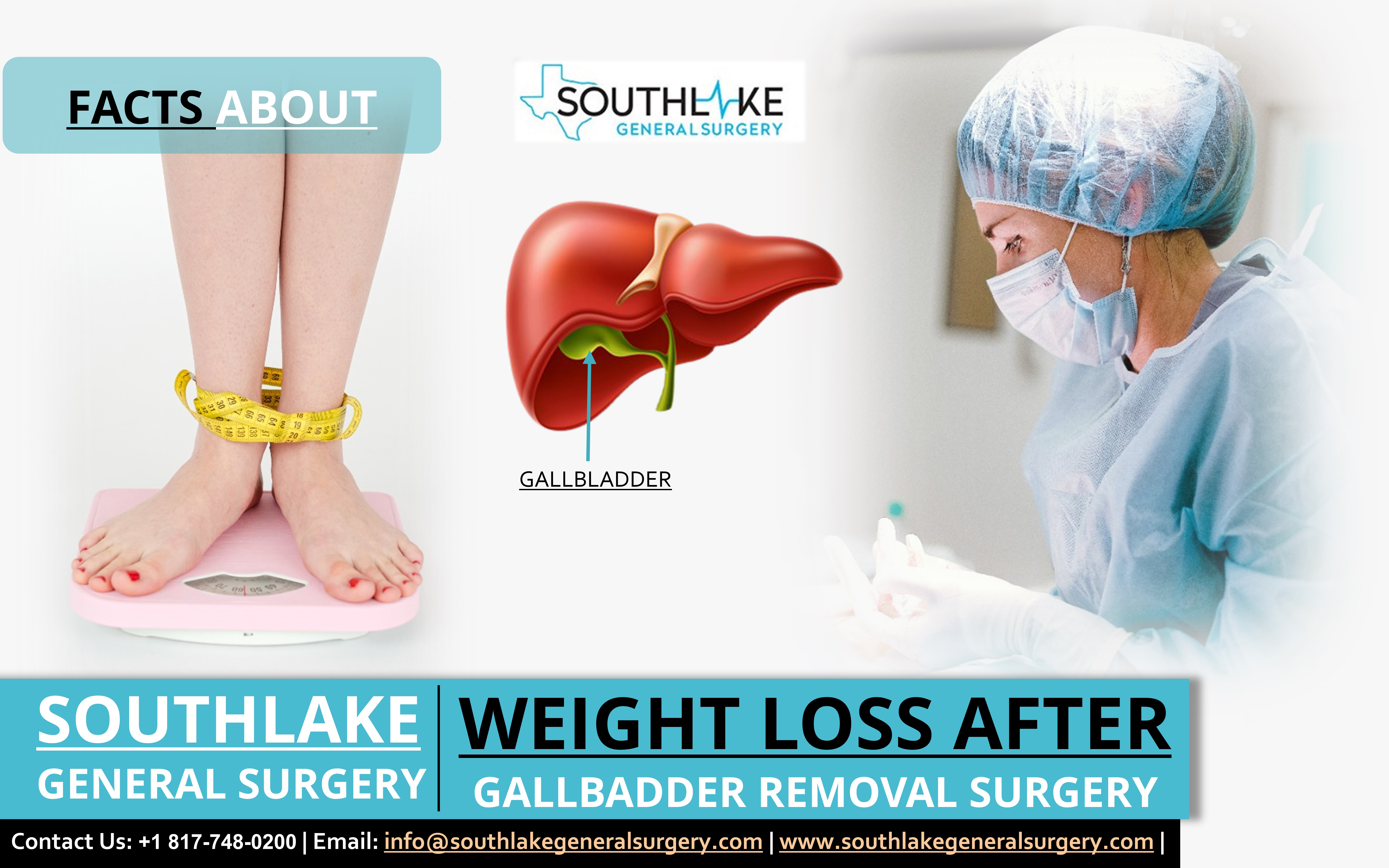
First of all, it is necessary to dispel a common misconception that surgery is one of the treatment options for cholelithiasis. In reality, the essence of the disease is a change in the physicochemical properties of bile produced by the liver. Bile becomes thicker, viscous, cloudy. So-called “flakes” are formed, settling in the gallbladder, eventually turning into stones, which, in turn, can damage the inner surface of the gallbladder or clog the bile ducts, which is already an indication for urgent surgical intervention.
Since the problem of cholelithiasis is initially in the change in the composition of bile, the operation to remove the bladder does not solve the problem of stone formation.
The recurrence of symptoms may indicate the development of a complication after surgery – postcholecystectomy syndrome (PCS). This syndrome is corrected by diet therapy and drug treatment prescribed by a gastroenterologist.
In case of serious manifestations, such as fever, vomiting, acute pain, an ambulance should be called urgently, because. most likely, these are signs that a second operation will be required.
most likely, these are signs that a second operation will be required.
It may seem to the remaining 70% that they are freed from the need to control their health, and this is the main and most dangerous delusion.
In new anatomical conditions (without a gallbladder), it is necessary to regularly monitor the condition of the bile ducts using ultrasound and observation by a gastroenterologist. If this is not done, the risk is high:
Patients who ignore the disease may become regular visitors to operating rooms. In the future, may even require repeated surgical intervention in the form of a stent, drainage, external drainage (percutaneous removal of bile using a tube).
Medical supervision after surgery
After gallbladder surgery, the surgeon often does not make any long-term recommendations. However, to avoid repeated operations, complications and recurrence of symptoms of cholelithiasis, it is necessary:
- 1-2 times a year – a visit to a gastroenterologist to assess the state of the hepatobiliary zone
- 1-2 times a year – ultrasound of the abdominal organs, in particular ultrasound of the common bile duct0054
- continuous or course intake of bile thinners (ursodeoxycholic acid – UDCA) and antispasmodics according to the recommendations of the attending gastroenterologist.

After removal of the gallbladder, be sure to visit a gastroenterologist regularly and agree with him on the list of approved drugs for digestion, such as allochol, mezim, creon, festal, etc. Also, in the future, discuss the possibility of taking antibiotics and vitamins. It is not recommended to take any medications on your own – consult your doctor.
The work of other organs after removal of the gallbladder
Observation of a gastroenterologist is required for another reason. In new anatomical conditions, in which there is no gallbladder, changes often occur in the work of other organs of the gastrointestinal tract. The liver, pancreas, intestines, stomach, the bile ducts themselves work differently after removal of the gallbladder.
When the gallbladder is removed:
- There is a relative deficiency of special hormones of the enterohormonal system that regulate the tone of the muscle ring (the sphincter of Oddi) surrounding the common bile and pancreas (Wirsung) ducts.
 In this situation, persistent spasm of the sphincter, which can lead to pain in the right and left hypochondrium, as well as girdle pain that mimics pancreatitis.
In this situation, persistent spasm of the sphincter, which can lead to pain in the right and left hypochondrium, as well as girdle pain that mimics pancreatitis. - Bile can no longer accumulate in the “sac”, which is the gallbladder, so it flows unconcentrated. This interferes with the normal activation of pancreatic enzymes in the duodenum, disrupting an important intestinal phase of digestion. As a result, diarrhea or constipation, disturbances of the intestinal microflora may occur.
- If the sphincter of Oddi is in a relaxed state, then the microflora of the duodenum can settle in the unprotected bile ducts. This forms inflammatory processes in the walls of the ducts – cholangitis.
- There is an opinion in the medical community that the removal of the gallbladder is an additional risk for the development of fatty liver due to impaired gastrointestinal hormone production and malnutrition, but at the moment this has not been conclusively confirmed by studies.

Some patients are concerned about whether the liver needs additional support after gallbladder removal. The answer depends on whether there is an established liver disease, damage to its tissue (fibrosis or cirrhosis), changes in biochemical blood tests, etc. The exact answer will be given by a gastroenterologist-hepatologist based on the examination, analysis of complaints and the history of the disease. If necessary, the doctor will prescribe a special treatment for the liver and hepatoprotectors. Prescribing medications on your own is dangerous.
Lifestyle and nutrition after gallbladder removal
Among the factors leading to gallstone disease and gallbladder removal, an important place is occupied by malnutrition and a sedentary lifestyle. After removal, both of these aspects, of course, require control by the patient.
Nutrition
The most important rule to follow is regular meals in small portions every 2-4 hours (fractional meals).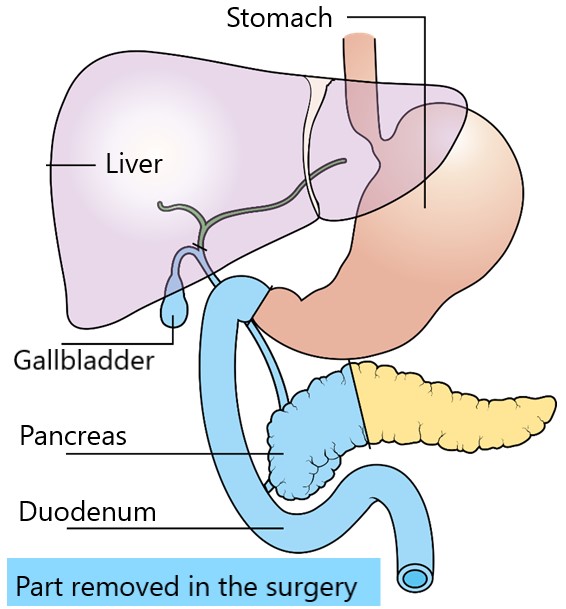
You should adhere to a therapeutic diet (Table No. 5), which excludes heavy and harmful foods: fried, fatty, salty, smoked. The exception also includes alcoholic beverages, pastry, fatty meats and fish and other products.
See also: Proper nutrition after gallbladder removal
Lifestyle and physical activity
Playing sports and leading an active lifestyle is necessary for the proper functioning of the digestive system. If the operation was successful and you no longer feel pain, heaviness, nausea and other symptoms, then after 3-6 months you can gradually increase physical activity.
Can I play sports after gallbladder removal?
Cholecystectomy, like any other operation, requires recovery period, during which you should not actively engage in any sports. You can return to standard sports training 6 weeks after surgery. However, the least traumatic activities, such as walking, may be recommended by the attending physician as early as the first week of the postoperative period. Sports that do not involve heavy lifting and strenuous exercise are usually relatively well tolerated by people who have successfully recovered from cholecystectomy. It is optimal to gradually and carefully return to the sports that you did before the operation.
Sports that do not involve heavy lifting and strenuous exercise are usually relatively well tolerated by people who have successfully recovered from cholecystectomy. It is optimal to gradually and carefully return to the sports that you did before the operation.
Sports with heavy lifting (weightlifting, powerlifting, etc.), as well as various types of martial arts are not among the types of sports activities recommended by doctors after cholecystectomy. After all, these sports sometimes cause problems even for strong and hardy people. In rare cases, exceptions may be made, subject to good health and constant supervision by the attending physician.
Frequently Asked Questions
Is there a disability after gallbladder removal?
According to the criteria established by the medical community, the absence of a gallbladder in itself is not an indication for the assignment of a disability, because. it does not interfere with labor and mental activity. If the patient’s work is associated with heavy physical labor or high mental and emotional stress, he may be recommended light working conditions.
If the patient’s work is associated with heavy physical labor or high mental and emotional stress, he may be recommended light working conditions.
Disability after removal of cholecystectomy may be assigned if complications occur during or after the operation.
To obtain a disability group, you must apply for a medical and social examination (ITU).
Can the liver hurt after gallbladder removal?
The liver itself does not hurt – it does not have nerve endings responsible for feeling pain. If you are experiencing pain and discomfort in the right hypochondrium, this is probably the consequences of gallbladder surgery, which should pass within a week.
If symptoms persist, this may indicate the development of postcholecystectomy syndrome (PCS), for which it is recommended to consult a gastroenterologist.
Is it okay to have sex?
Sexual activity, like sports, is characterized by a wide range of possible physical and physiological loads.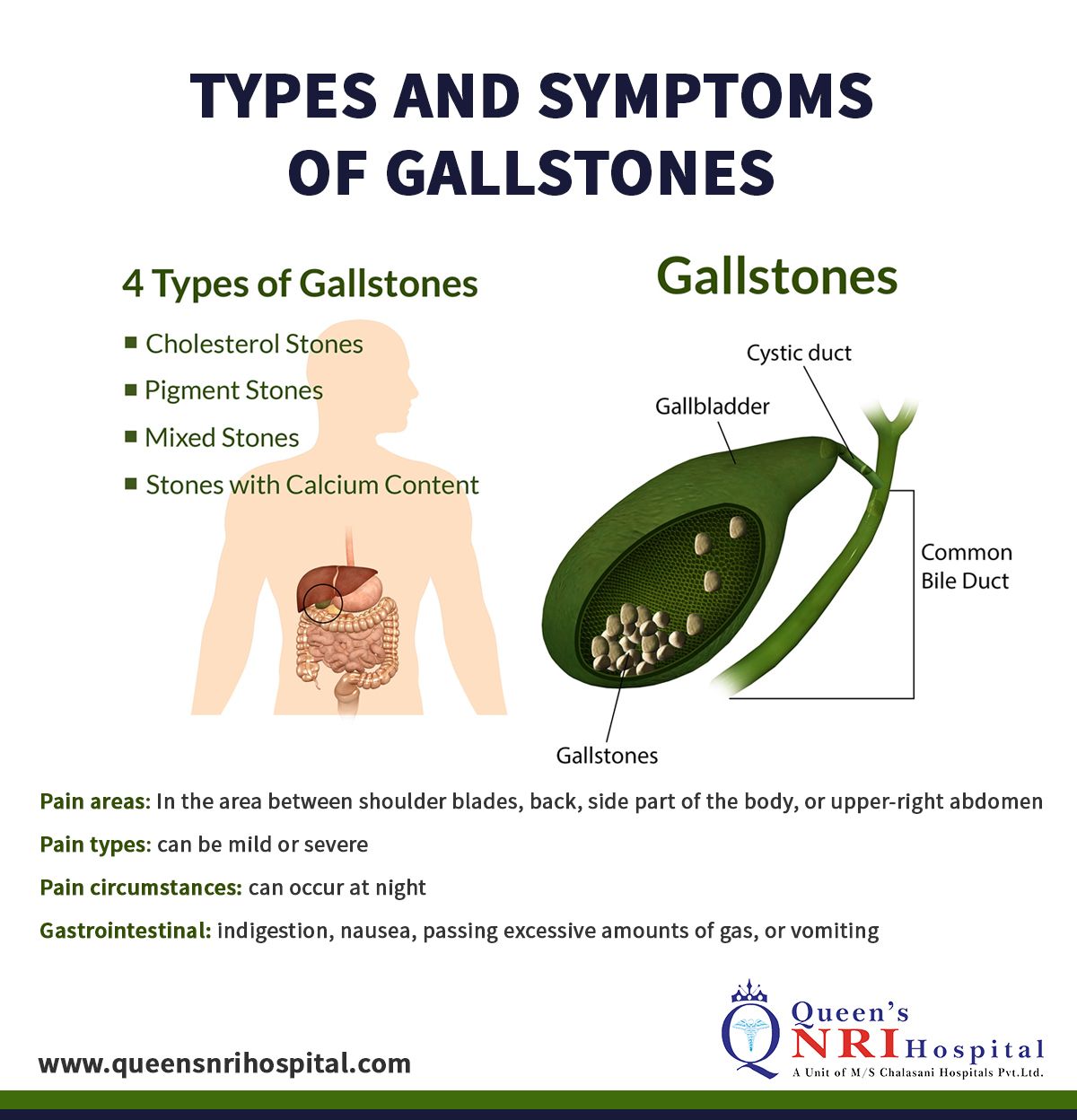 After successful completion of postoperative recovery, patients can return to normal sexual activity. However, it should be remembered that certain intercourse positions that involve lifting a partner or squeezing the abdominal area should be used carefully and within reasonable limits.
After successful completion of postoperative recovery, patients can return to normal sexual activity. However, it should be remembered that certain intercourse positions that involve lifting a partner or squeezing the abdominal area should be used carefully and within reasonable limits.
Is it possible to carry a pregnancy after removal of the gallbladder?
Pregnancy should not be planned earlier than 3-6 months after a successful operation. During this period, the body will restore strength and it will become clear whether there are negative consequences after the intervention.
In any case, pregnancy, childbirth, hormonal changes are risk factors for the formation of new stones. During and after gestation, it is necessary to pay special attention to the nutrition of the expectant mother, it is advisable to be under the supervision of a gastroenterologist and nutritionist, to do preventive ultrasound of the bile ducts.
Is it permissible to lift weights?
This depends primarily on the type of operation performed. With less invasive laparoscopic removal of the gallbladder, the restrictions on weight lifting in the postoperative period are less significant: do not lift weight above 9-10 kg in the first 4-6 weeks. With open surgery to remove the gallbladder, the weight limit is 5-6 kg.
With less invasive laparoscopic removal of the gallbladder, the restrictions on weight lifting in the postoperative period are less significant: do not lift weight above 9-10 kg in the first 4-6 weeks. With open surgery to remove the gallbladder, the weight limit is 5-6 kg.
After the recovery period is over, you can try to lift more significant weights, but you need to listen to your well-being. If you feel discomfort in the abdomen, you should stop lifting weights and consult a doctor.
Is it dangerous to have a cold immediately after surgery?
The common cold, acute respiratory infections or SARS can affect anyone, and the patient’s body after gallbladder removal is especially vulnerable, as his immunity is reduced in the first weeks after surgery and general anesthesia. That is why, for the prevention of colds, it is important to avoid hypothermia, drafts and follow the regimen prescribed by the doctor.
The danger is that some people may develop postoperative pneumonia after surgery. Symptoms of this disease in the initial stages resemble the common cold. If symptoms similar to a cold occur after the operation, but then the temperature rises significantly (above 38 ° C), you should immediately contact your doctor.
Symptoms of this disease in the initial stages resemble the common cold. If symptoms similar to a cold occur after the operation, but then the temperature rises significantly (above 38 ° C), you should immediately contact your doctor.
The same should be done in cases where the temperature is 37.1-38 °C for several days or cold symptoms gradually increase.
Is it possible to take hot baths, go to the sauna and when?
An increase in body temperature in a hot bath or bath increases blood flow and inflammation, if any. You can wash in warm and hot water 3-4 weeks after the removal of the stitches – with care, not being exposed to high temperatures for longer than necessary.
You must be careful:
- warm yourself only to the first sweat
- control your well-being
- prefer a wet sauna to a dry sauna.
Is it possible to smoke and drink alcohol after gallbladder removal?
Try to give up cigarettes or at least reduce their number as much as possible.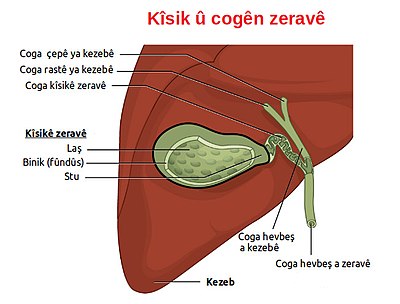 Nicotine is one of the factors in the formation of new stones in the bile ducts. In addition, immunity after any operation is weakened, and the risk of complications becomes higher. To avoid postoperative pneumonia, smokers are advised to stop using nicotine products, including chewing gum and nicotine patches, at least two weeks before their upcoming surgery.
Nicotine is one of the factors in the formation of new stones in the bile ducts. In addition, immunity after any operation is weakened, and the risk of complications becomes higher. To avoid postoperative pneumonia, smokers are advised to stop using nicotine products, including chewing gum and nicotine patches, at least two weeks before their upcoming surgery.
The same applies to the consumption of alcoholic beverages. Drinking alcohol during the postoperative recovery period can lead to an increased risk of complications, such as diarrhea, elevated liver enzymes in the blood, and slower recovery.
How does life change after gallbladder removal?
Lifestyle does not change dramatically after the recovery period, so after 1 month, as well as after 2, 3, 4, 5, 6 months, after a year or two, the main thing is to follow the general recommendations.
The main changes after cholecystectomy focus on diet and exercise. They must be gentle and introduced gradually and carefully.


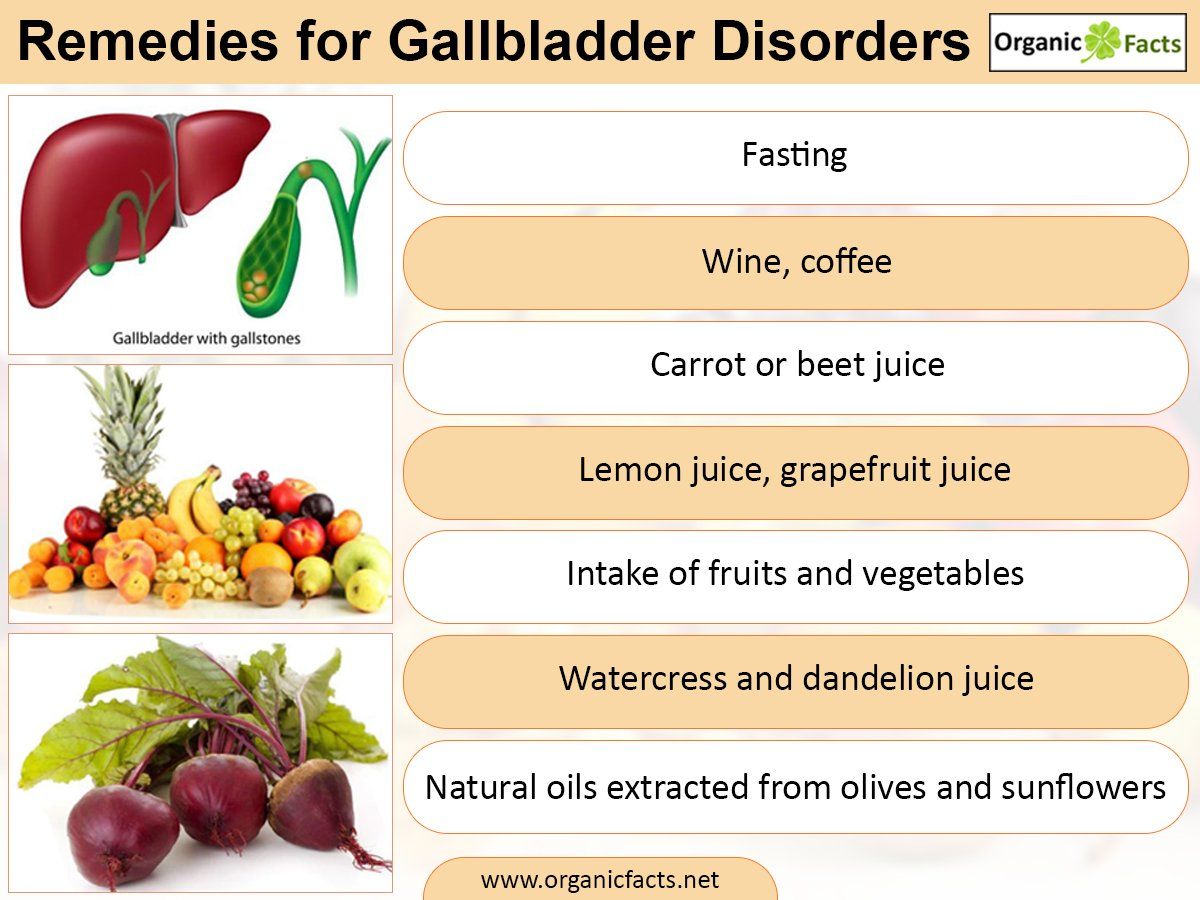 And this can lead to an increase in the incidence of, for example, gastritis or gastroesophageal reflux.
And this can lead to an increase in the incidence of, for example, gastritis or gastroesophageal reflux.
 AJR 2008;191:794–801.
AJR 2008;191:794–801.

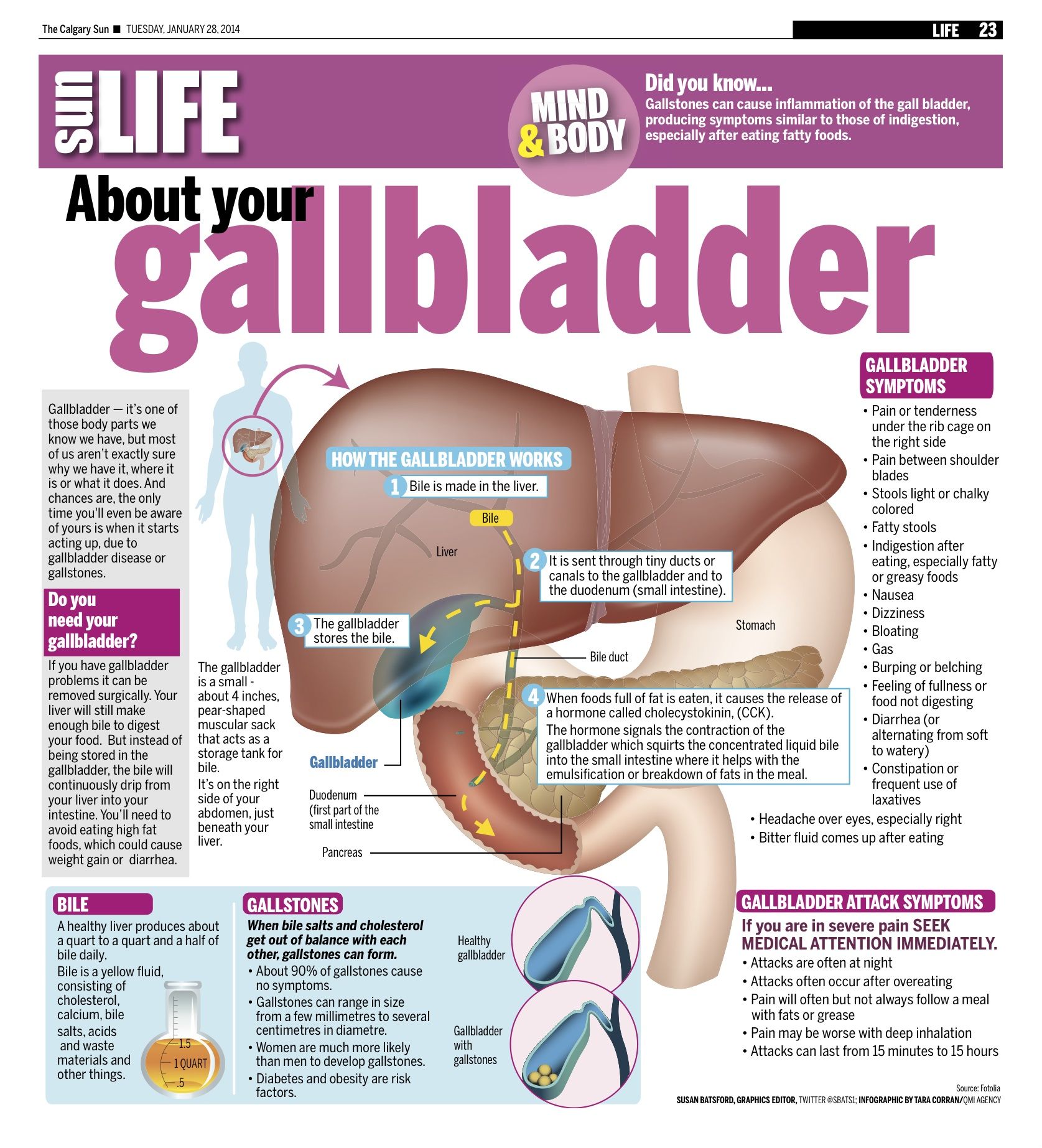 In this situation, persistent spasm of the sphincter, which can lead to pain in the right and left hypochondrium, as well as girdle pain that mimics pancreatitis.
In this situation, persistent spasm of the sphincter, which can lead to pain in the right and left hypochondrium, as well as girdle pain that mimics pancreatitis.